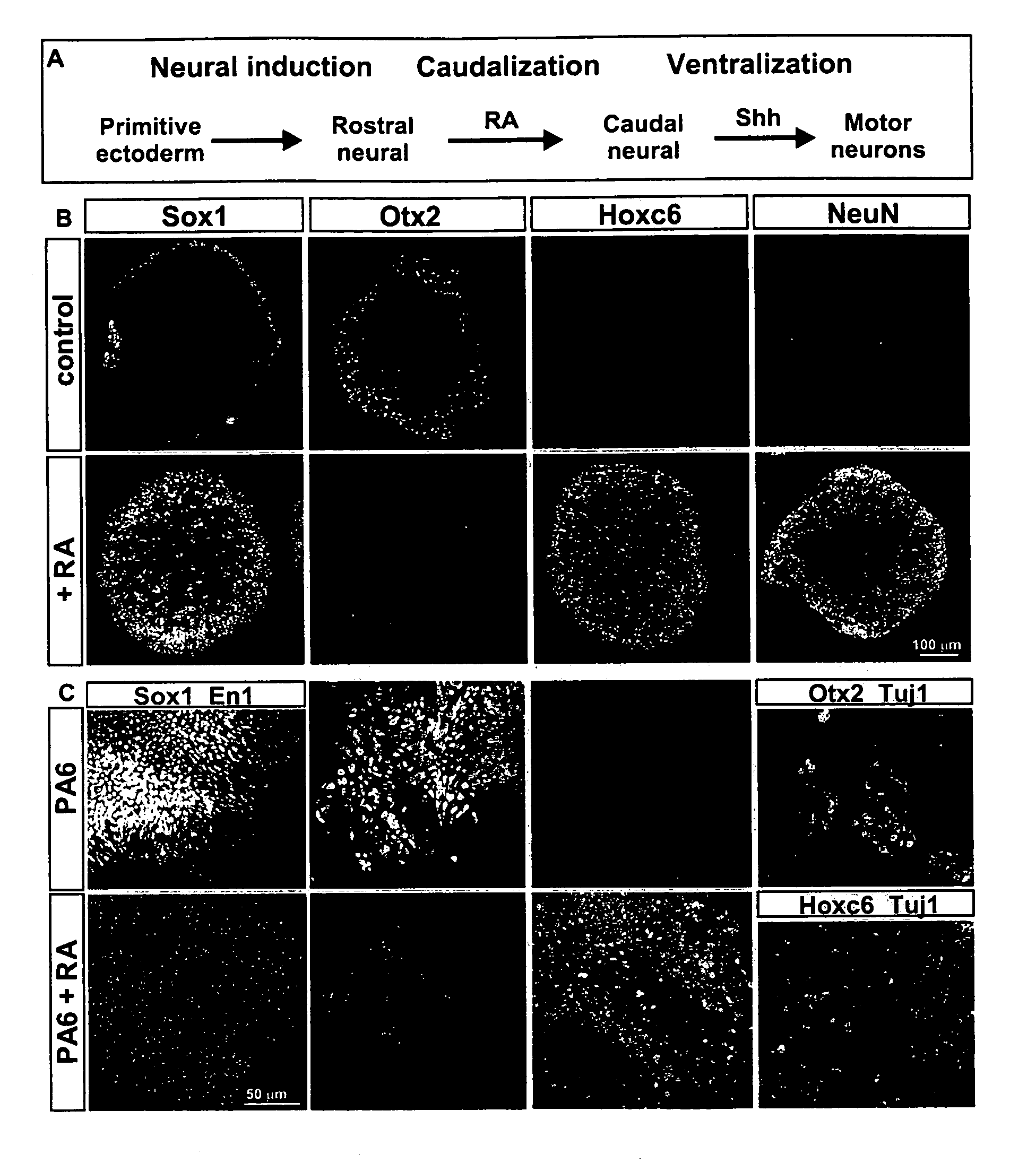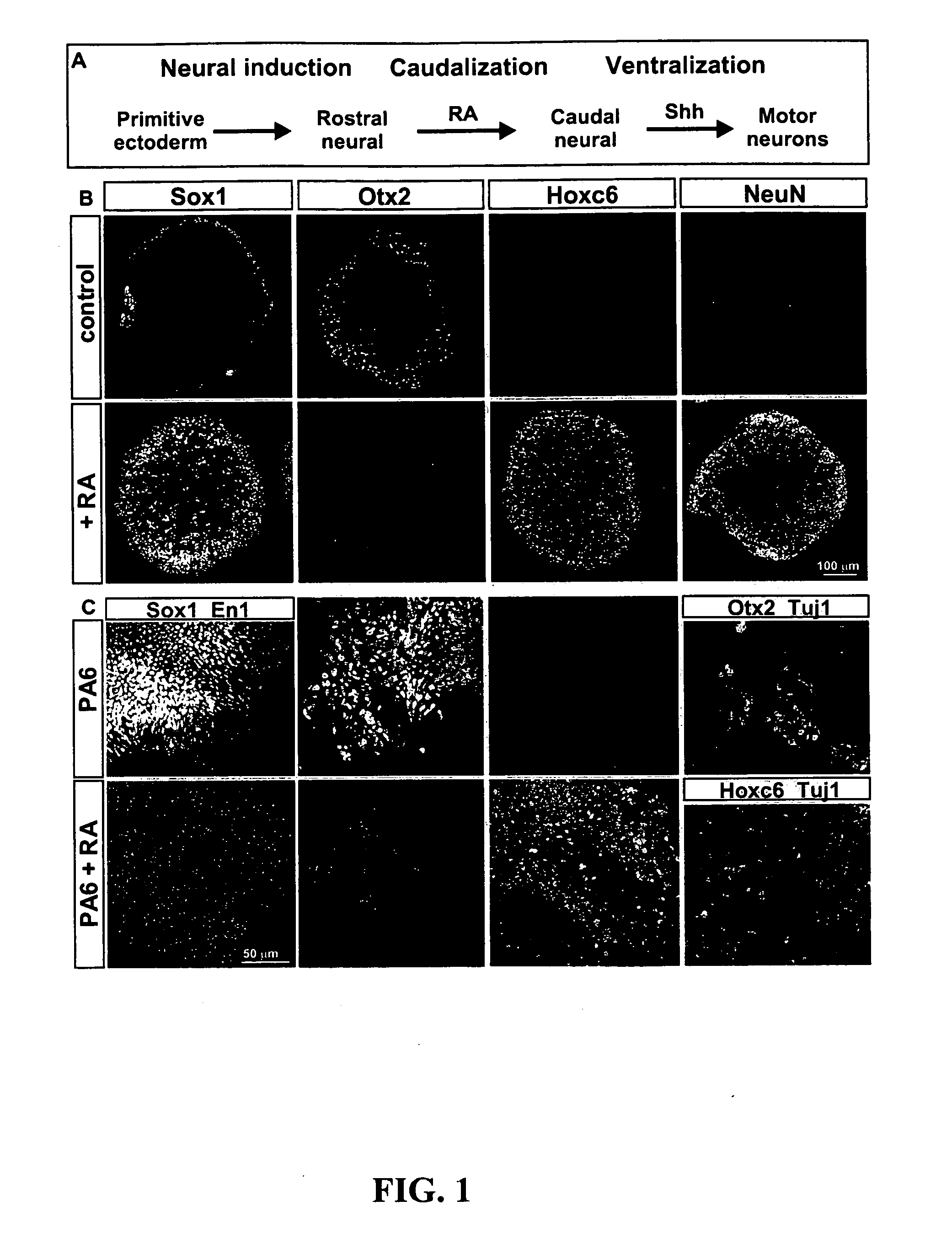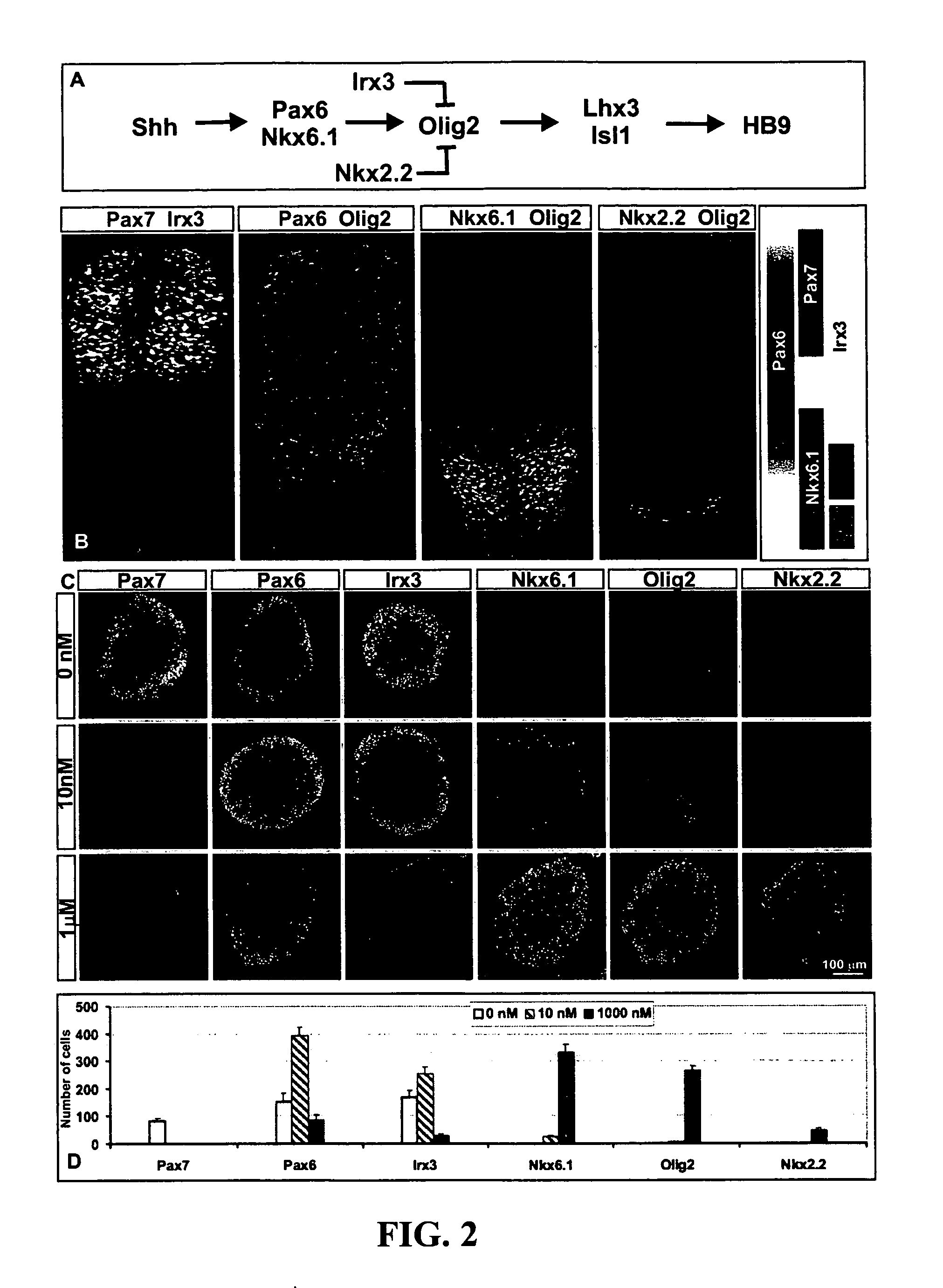Systems and methods for screening for modulators of neural differentiation
a neural differentiation and system technology, applied in the field of systems and methods for screening for neural differentiation modulators, can solve the problems of difficult systematic direction of such progenitor cells along specific pathways of neuronal differentiation
- Summary
- Abstract
- Description
- Claims
- Application Information
AI Technical Summary
Benefits of technology
Problems solved by technology
Method used
Image
Examples
example 1
ES-Cell Cultures
[0191] For some experiments, wild-type (MM13 or W9.5) or HB9::GFP transgenic-mouse-derived (HBG3) embryonic stem (ES) cells were grown on feeder layers of primary mouse embryonic fibroblasts in ES-cell medium (Dulbecco's Modified Eagle's Medium (DMEM) with 4500 mg / l glucose and 2250 mg / l Na-bicarbonate, supplemented with 1× non-essential amino acids, 1× nucleosides (all from Specialty Media, Lavellette, N.J.), 0.1 mM 2-mercaptoethanol (Sigma Chemical Co., St. Louis, Mo.)), 2 mM L-glutamine (Gibco BRL, Gaithersburg, Md.), 1× penicillin / streptomycin (Gibco), 15% FBS (HyClone, Logan, Utah), and 1000 μ / ml LIF (Chemicon, Temecula, Calif.). ES-cell colonies were partially dissociated with trypsin, 2 days after plating, and cultured in DFK5 medium consisting of DF medium (DMEM / F12 supplemented with glucose (4500 mg / l; Sigma), 2 mM L-glutamine (Gibco), 1× penicillin / streptomycin (Gibco), 0.1 mM 2-mercaptoethanol (Sigma), 1× insulin-transferrin-selenium supplement (Gibco), 2...
example 2
[0194] Embryoid bodies (EBs) were fixed with 4% paraformaldehyde, and sectioned on acryostat. For immunostaining, the following antibodies were used: rabbit αHB9, αOlig2, αNkx2.2, αLhx3, αDbx1 (Pierani et al., Control of interneuron fate in the developing spinal cord by the progenitor homeodomain protein Dbx1. Neuron, 29(2):367-84, 2001), αIrx3, αGFP (1:2000, Molecular Probes, Inc., Eugene, Oreg.), αSox1 (1:500) (Pevny et al., Generation of purified neural precursors from embryonic stem cells by lineage selection. Curr. Biol., 8:971-74, 1998), αOtx2 (1:1000) (Mallamaci et al., OTX2 homeoprotein in the developing central nervous system and migratory cells of the olfactory area. Mech. Dev., 58:165-78, 1996), αHoxC5 (Liu et al., Assigning the positional identity of spinal motor neurons. Rostrocaudal patterning of Hox-c expression by FGFs, Gdfl1, and retinoids. Neuron, 32:997-1012, 2001), and αChx10; mouse αPax7, αPax6, αHB9, αLim1, αNkx6.1, αNkx2.2, αEn1, αLim2 (mou...
example 3
Generation of eGFP Transgenic Mouse Lines
[0195] A transgenic mouse line was established by pronucleus injection of a construct that used a ˜9 kB fragment comprising the 5′ upstream region of the murine HB9 gene (Arber et al., Requirement for the homeobox gene Hb9 in the consolidation of motor neuron identity. Neuron, 23:659-764, 1999), followed by a 5′ splice substrate (Choi et al., A generic intron increases gene expression in transgenic mice. Mol. Cell Biol., 11:3070-74, 1991), an eGFP gene, and a bovine growth hormone polyadenylation signal. The ˜9 kB Not1 fragment of HB9 is sufficient to direct eGFP expression to develop motor neurons in transgenic embryos examined from E9.5 to P10. In one transgenic line (mHB9-Gfp1b), the pattern of eGFP expression corresponded closely to the profile of expression of endogenous HB9. ES-cell lines were derived from mHB9-Gfp1b heterozygous blastocysts, as previously described (Abbondanzo et al., Derivation of embryonic stem cell lines. Methods E...
PUM
| Property | Measurement | Unit |
|---|---|---|
| time | aaaaa | aaaaa |
| homogenous | aaaaa | aaaaa |
| concentrations | aaaaa | aaaaa |
Abstract
Description
Claims
Application Information
 Login to View More
Login to View More - R&D
- Intellectual Property
- Life Sciences
- Materials
- Tech Scout
- Unparalleled Data Quality
- Higher Quality Content
- 60% Fewer Hallucinations
Browse by: Latest US Patents, China's latest patents, Technical Efficacy Thesaurus, Application Domain, Technology Topic, Popular Technical Reports.
© 2025 PatSnap. All rights reserved.Legal|Privacy policy|Modern Slavery Act Transparency Statement|Sitemap|About US| Contact US: help@patsnap.com



